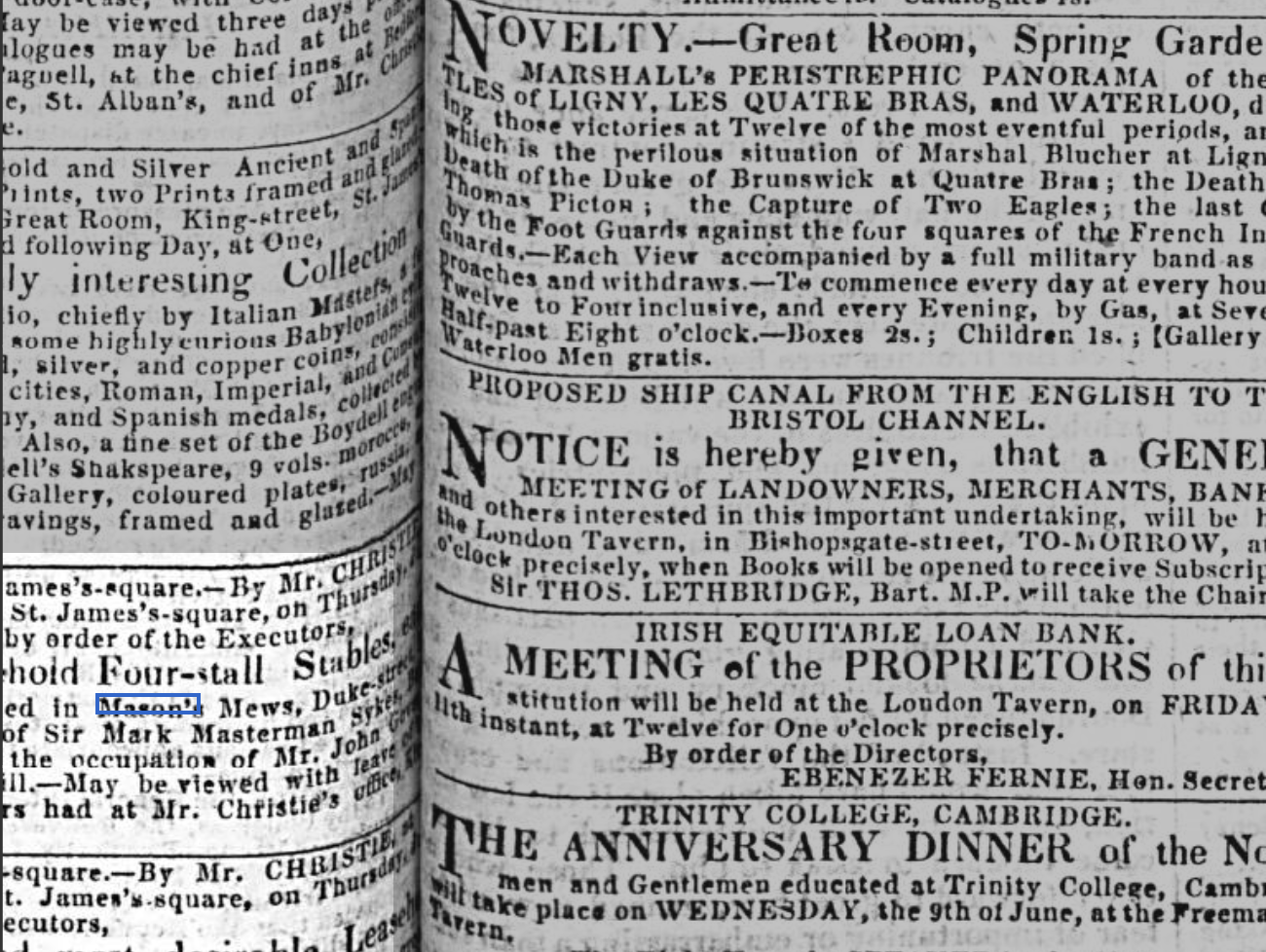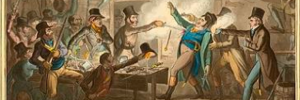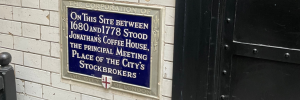Ormond Yard was laid out as a 200 feet square plot of land originally designed to be a stable yard and by 1740 the yard was already being called Mason’s Yard, probably due to the owner of the two houses fronting both the yard and Duke street was a Mr Henry Mason. It would make sense for him to have rented some stables in Mason’s Yard.
In 1748 the London Evening Post reported a death ‘at his House in Duke-Street’ of a Mr. Margison ‘who for several Years kept the great Stable-Yard in that Street call’d Mason’s Mews’.
Mason’s Yard appears again in the Morning Herald (London) on Tuesday 08 June 1824. 76 years later Mason’s Mews is still being used as a mews being described as:
“St. James’s-square, on by order of the Executors, a Freehold Four-stall Stow’ ed in Mason’s Mews, of Sir Mark Masterman. The executors …most desireable or a long term of years…. Premises are substantial.”

Mason’s Mews is shown again in Bell’s New Weekly Messenger – Sunday 13 September 1835. Under the listings of ‘Partnerships Dissolved’
“J. South and G. Howse, Mason’s Mews, Duke Street, St. James’s, livery stable-keepers.”
Mason’s Mews turns up again but this time in the police records of a court case held at Marlborough Street Magistrates Court, printed in the Morning Advertiser – Wednesday 01 1843. The records highlight a case of ‘pretended sale’. Mr. Dale of the Gloucester Coffee-House, Piccadilly had responded to Mr. Maltby’s advert of two carriages advertised in the public papers. He sent someone to negotiate the purchase of one carriage but the sale fell through due to the “ostensibe seller”. Mr Dale then sent Mr Rapley as his agent to buy both carriages. The price of 60l. was agreed upon. When Mr Rapley returned with the money to pay Mr Maltby demanded 60 guineas. Mr Rapley paid 63l and requested the carriages to be delivered. Mr Maltby pocketed the 63l but then demanded an additional 37l, making the total for both carriages 100l. Outrages Mr Rapley demanded the money back, which Mr Maltby refused to do. He also refused to give Mr Rapley the carriages too. The report shows that Mr Dale was of the mind that he considered to consult his solicitor with the view of proceeding civilly against Mr Maltby. I wonder what happened next. British Newspaper Archive
Today Mason’s yard continues to be used partly as garages and preserves a little of the general aspect of an old stable yard with the new White Cube taking centre stage.

In 2000, Jay Jopling’s pioneering White Cube gallery – the spiritual home of the Young British Artists – moved from its original home in St James’s for a big new space on Hoxton Square.
Jopling (the son of a Conservative MP) opened this second White Cube gallery back in St James’s. Which is not to say that his new gallery is in any way staid or traditional.
.JPG&container=blogger&gadget=a&rewriteMime=image%2F*)
As one of the most successful British gallerists in recent history he has the alchemist’s touch; turning art into monetary success. This has earned him a reputation as a svengali figure moulding and manipulating his artists and the market.
The White Cube was the first freestanding building in St James’s. Built on the site of a former electricity sub-station it is a classic modernist white box, with long slit windows, and a very Tate-like glass roof.
.JPG&container=blogger&gadget=a&rewriteMime=image%2F*)
Inside the White Cube Gallery there are two long gallery spaces carry exhibitions of the very best of contemporary British art.
–
Hazel Baker is a qualified CIGA Tour Guide who delivers guided walks and private tours in London. View all of Hazel’s walking tours.



